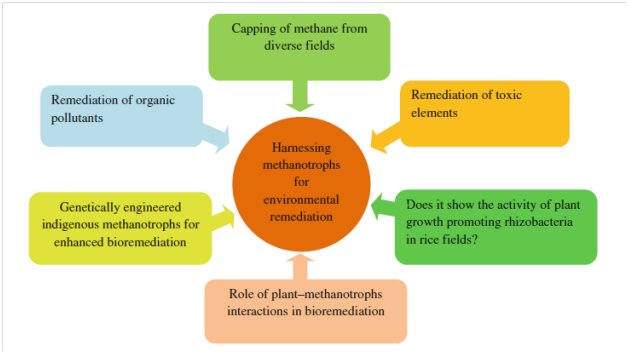Relevance: Prelims: Science and technology
Why in news?
- Scientists at Agharkar Research Institute (ARI), Pune, an autonomous institute under the Department of Science and Technology, have isolated 45 different strains of methanotrophic bacteria which have been found to be capable of reducing methane emissions from rice plants.
About:
- Methanotrophs metabolise and convert methane into carbon-di-oxide. In rice fields, methanotrophs are active near the roots or soil-water interfaces.
- They can effectively reduce the emission of methane, which is the second most important greenhouse gas (GHG) and 26 times more potent as compared to carbon-di-oxide.
- Rice fields are human-made wetlands and are waterlogged for a considerable period. Anaerobic degradation of organic matter results in the generation of methane. Rice fields contribute to nearly 10% of global methane emissions.
- Bio-methane generated from waste can also be used by the methanotrophs and can be converted to value-added products such as single-cell proteins, carotenoids, biodiesel, and so on.
For more such notes, Articles, News & Views Join our Telegram Channel.
Click the link below to see the details about the UPSC –Civils courses offered by Triumph IAS. https://triumphias.com/pages-all-courses.php


